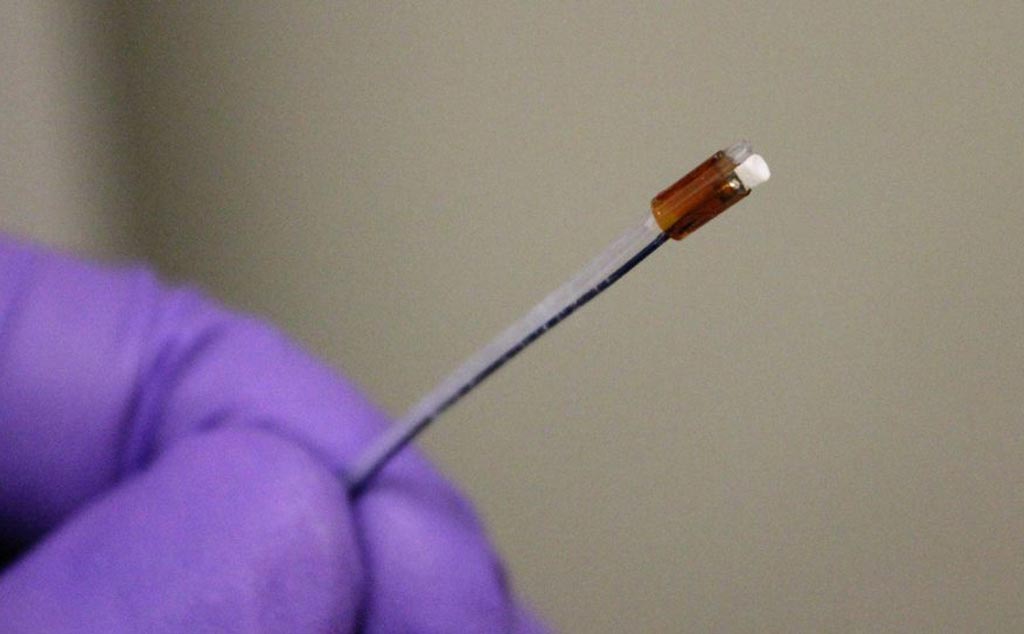Low-Frequency Ultrasound Breaks Down Blood Clots
By HospiMedica International staff writers
Posted on 28 Jun 2017
A new study describes how low-frequency intravascular ultrasound can be used to remove or dissolute large clots resulting from acute thrombo-occlusive diseases.Posted on 28 Jun 2017
Developed by researchers at North Carolina State University (NC State, Raleigh, USA) and the University of North Carolina (UNC, Chapel Hill, USA), the new sub-megahertz, intravascular microbubble-mediated sonothrombolysis device is forward-facing--like a drill--but can break the blood clots into very fine particles, thus improving the thrombolytic rate and minimizing the required dose of drugs. The tool also incorporates an injection tube for users to introduce cavitation-induced microbubbles at the site of the clot, making the ultrasound waves even more effective.

Inage: An intravascular microbubble-mediated ultrasonic “drill” can remove blood clots (Photo courtesy of Xiaoning Jiang / NC State).
The custom miniaturized transducers face forward, unlike conventional high-frequency, side-looking, catheter-mounted transducers. In prototype testing of the device using a synthetic blood vessel and cow’s blood, the transducers were able to generate sufficient pressure to induce cavitation of lipid-shelled microbubble contrast agents, with a lytic rate of 0.7% mass loss/min in vitro, without any use of thrombolytic drugs. The study was published on June 14, 2017, in Nature Scientific Reports.
“This is a successful proof of concept, and we’re now in the process of securing funding to move forward with trials in an animal model,” said senior author Professor Xiaoning Jiang, PhD, of the department of mechanical and aerospace engineering at NC State. “Our approach improves accuracy without relying on high doses of blood thinners, which we hope will reduce risks across the board.”
Cavitation is the formation of vapor cavities - small liquid-free zones that are the consequence of forces acting upon a liquid. It usually occurs when a liquid is subjected to rapid changes of pressure that cause the formation of cavities in the liquid where the pressure is relatively low; under higher pressure, the voids implode. Inertial cavitation is the process where a void or bubble in a liquid rapidly collapses, producing a shock wave. Non-inertial cavitation is the process in which a bubble in a fluid is forced to oscillate in size or shape due to some form of energy input, such as an acoustic field, and is employed in ultrasonic cleaning baths.
Related Links:
North Carolina State University
University of North Carolina














